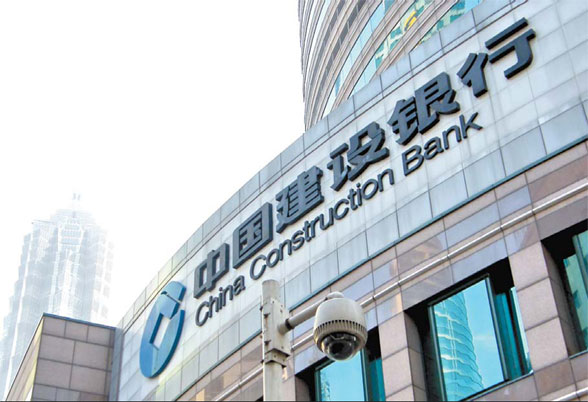
China Construction Bank Corp., the nation's second-largest lender by assets, reported a record quarterly net profit for the third quarter, on rapid growth of fee-based businesses and despite slower loan expansion.
State-run CCB, in which Bank of America Corp. owns a stake of about 10%, said Friday that net profit for the three months ended Sept. 30 was 39.76 billion yuan ($5.93 billion), up 31% from 30.31 billion yuan a year earlier. The result was above the average 35.72 billion yuan forecast of seven analysts.
As a result of Beijing's credit tightening, CCB's outstanding loans grew 14% in the first three quarters from the end of last year, slowing from a 24% surge in the same period of 2009.
"The bank stepped up adjustments to the credit structure in the third quarter. The growth rate of loans to the real-estate sector was much lower than that of corporate loans," CCB, China's largest mortgage lender, said in a statement posted on the Hong Kong stock exchange's website.
"The property loans were mainly granted to prime customers with strong financial strength and regions where property prices were stable," it said.
But the bank said a higher interest margin more than offset the effect of slower credit growth on its earnings.
CCB's net interest income rose 21% to 64.38 billion yuan, because its aggressive credit expansion last year continued to boost its top line and China's economic recovery allowed it to charge higher interest rates for new loans.
The bank said net income from fee-based intermediary businesses such as credit cards, wealth management products and trade settlement gained 22% to 15.04 billion yuan.
All of China's Big Four banks reported strong quarterly results over the past week. Industrial & Commercial Bank of China Ltd., the nation's biggest lender, said third-quarter net profit grew 27%, while Bank of China Ltd. reported a 29% increase and Agricultural Bank of China Ltd. posted a 30% jump.
Separately, midsized China Merchants Bank Co. said Friday its third quarter net profit jumped 53% to 7.38 billion yuan, driven by a rapid growth in interest and fee income.
However, analysts say the results may not be enough to ease concerns that Chinese lenders could face a sharp rise in bad assets after they issued a record 9.6 trillion yuan worth of yuan loans last year as part of the government's stimulus program.
Some of the negative consequences of that credit expansion have already started to appear. State-run China Securities Journal reported last month that a recent inspection by Chinese officials uncovered nearly 2 trillion yuan worth of loans to local-government financing platforms that are at serious risk of default.
Adding to the concerns are Beijing's repeated efforts to cool its economy by clamping down on asset prices in some sectors, especially the property sector, which is highly reliant on lending.
China increased its benchmark interest rates last week, the first time since 2007, in another push to achieve a moderate economic slowdown and avoid asset bubbles.
As of Sept. 30, CCB's nonperforming loan ratio fell to 1.14% from 1.22% at the end of June.
The bank said in April it plans to raise as much as 75 billion yuan via a rights issue in Shanghai and Hong Kong to replenish its capital base, which deteriorated following the surge in lending last year. The fund raising may take place as soon as November, as it has received approval from the bank's shareholders as well as China's banking and securities regulators.
As of Sept. 30, CCB's capital adequacy ratio was 11.64%, slightly down from 11.68% at the end of June and marginally above the regulatory minimum 11.50% for China's large state-run banks.